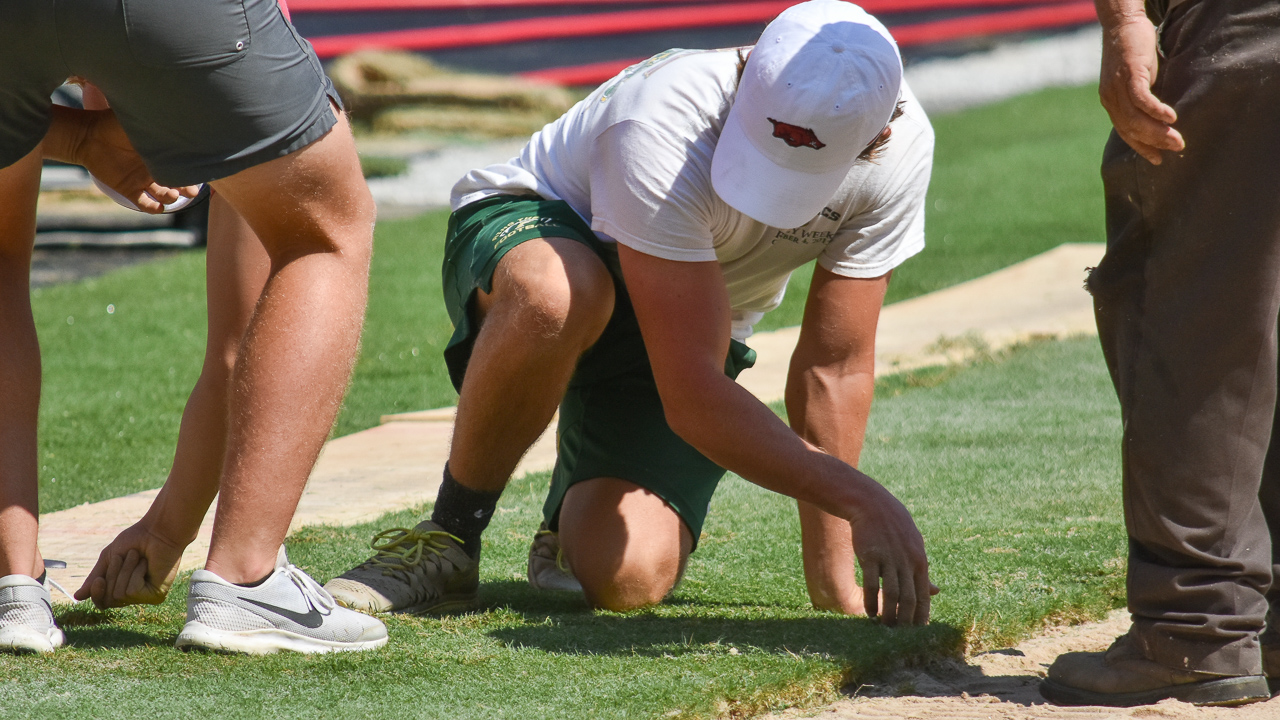Football
Natural grass installation starts Monday on Razorback Stadium
While some have been nervous about waiting until August to install the new natural grass field at Razorback Stadium, it apparently is going to work out fine.

While some have been nervous about waiting until August to install the new natural grass field at Razorback Stadium, it apparently is going to work out fine.
At least that’s what athletics director Hunter Yurachek believes and what he’s been told the “Tahoma 31” brand of Bermadu grass will be okay.
“I’m not a grass expert, but I’ve been told that this Tahoma 31 solves that issue,” Yurachek said Monday as the installation was taking place. “It’s about two years old. The brand of this grass, and with that Evergreen Matrix System that was developed in Australia that’s going to be underneath it, that’s supposed to solve that problem.
“Time will tell. We have a backup field if we have any issues. There is a backup field from Memphis so that we can replace any of the dead spots that we may have.
The grass was grown in Memphis and a line of four refrigerated trucks from J.B. Hunt were lined up at the stadium and installation began Monday morning.
It is fairly close to being on schedule. The grass was supposed to arrive closer to the first of the month, but has been delayed a few days.
It is something Morris was in favor of doing since he and Yurachek arrived in Fayetteville in December 2017.
“We talked to 10 of our SEC schools, and they play on a natural grass surface,” Yurachek said. “The majority of our games are played on natural grass and coach Morris and I agreed that that is where football should be played.
“We both love the smell of the freshly cut grass and the look of the freshly painted grass. That’s where the game of football should be played, and it should be played for sure in the Natural State.
The grass is a type of Bermudagrass dubbed “Tahoma 31”, and the new field was transported from Memphis by J.B Hunt on four refrigerated trucks. The installation is roughly on schedule, although originally the grass was supposed to arrive on Aug. 1.
It is the fourth time the Hogs have changed. In a stadium built in 1938, the field was grass, but Frank Broyles got AstroTurf in place for the 1969 season, primarily because the Texas game was moved to December and it was hard then to keep grass green into mid-November.
Arkansas went to grass for awhile, then back to the new Field Turf in 2009 and it was time for that to be replaced.
One notion is that players are faster on the turf field, but not according to what Yurachek said Morris and the staff feel.
“They (coaches) believe natural grass is faster,” Yurachek said. “When you come out here with the freshly cut grass and the smell that you get from that, the freshly painted grass, the grass stains on your uniforms, even if you have a little rainy day and you get a little mud, I mean that’s football. That’s what you remember football being, espicially as a child growing up.”
Underneath is a new matrix system that is supposed to keep the grass from changing colors and to keep it cool.
Arkansas is the first school in the USA to bring in that system, which is supposed to eliminate a lot of the problems football fields have with keeping grass growing on football fields.























